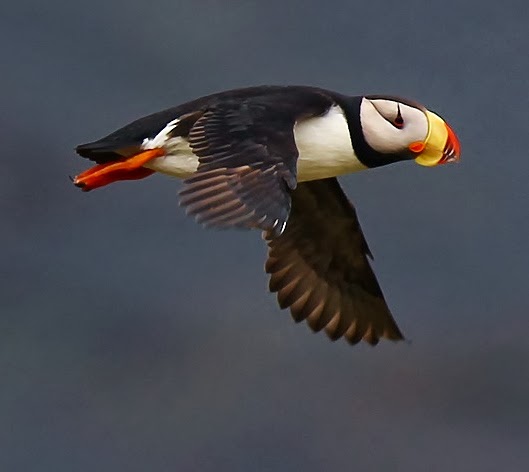 |
| Photo by Paul B. Jones (Flickr) |
Common name:
horned puffin (en); papagaio-do-mar-cornudo (pt); macareux cornu (fr); frailecillo corniculado (es); hornlund (de)
Taxonomy:
Order Charadriiformes
Family Alcidae
Range:
This species is found in the northern Pacific Ocean and adjacent parts of the Arctic Ocean, breeding from Wrangel island to the Queen Charlotte islands in Canada and to Sakhalinsk in Russia. Outside the breeding season their wander as far south as the coasts of northern Japan, Canada, and occasionally as far as northern California.
Size:
These birds are 32-38 cm long and weigh 580-650 g.
Habitat:
The horned puffin breed in coastal cliffs and offshore islands, preferring to forage in coastal waters near the breeding colonies. Outside the breeding season they favour open pelagic water for foraging.
Diet:
They feed mainly on small fish, namely juvenile herrings Clupea sp., capelin Mallotus sp. and sand lance Ammodytes sp., also hunting squids, crustaceans and polychaetes.
Breeding:
Horned puffins are monogamous and breed in April-July. They nest in small colonies, with each nest consisting of a burrow in a rock crevice or under a boulder, lined with feathers, grass or debris. The female lays a single grey egg with purple dots, which is incubated by both parents for 40-42 days. The chick is fed by both parents and fledges 34-46 days after hatching. They reach sexual maturity at 3-5 years of age.
Conservation:
IUCN status – LC (Least Concern)
This species has a very large breeding range and the global population is estimated at over 1,2 million individuals. The population is suspected to be in decline owing to predation by invasive species and ongoing habitat destruction.







